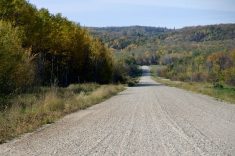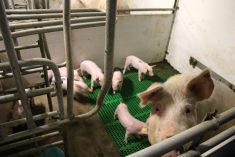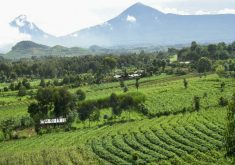Some say it saved Western Canada. But the Prairie Farm Rehabilitation Administration, perhaps the most respected government agency in Canada’s history, was dissolved in 2003. It’s time to bring it back.
Scientific principles are one thing. Encouraging farmers to use them are another — that requires expertise in ‘extension,’ a word which has unfortunately fallen somewhat out of favour. As chronicled in Men Against the Desert, James Gray’s book on the 1930s dust bowl, part of the success of PFRA’s founders lay in their ability to convince farmers to change farmers’ thinking on practices such as black summerfallow. Once the desert was beaten back, PFRA continued to earn farmers’ respect by establishing community pastures and by its expertise in local water projects, including 70,000 farm dugouts built between 1935 and 1960.
Read Also

Know where and why yields are low in your fields
Managing soil health issues can help farmers build back yield in unproductive patches of the field.
With the end of the most severe erosion of the 1930s and the adoption of reduced tillage, there was — and is — some tendency to think that good soil conservation practices have been widely adopted.
The PFRA challenged that notion in 2000 with the release of Prairie Agricultural Landscapes — A Land Resource Review. Its extensive analysis of soil and water health in Prairie crop and forage land was one of the most important but most ignored reports in recent memory.
“PFRA has determined that more than 50 per cent of annually cropped fields are exposed to erosion each year on the Prairies,” the introduction said. “The reduction of fall tillage and summerfallow and the adoption of direct-seeding systems have decreased the period during which soils are exposed to a high erosion risk. However, there remains ample opportunity for erosion to occur.”
Regarding forages, “The survey found that more than half of Prairie rangeland is in less than good condition, with some areas reporting over three-quarters of the land in less than good condition.”
As it is now, the industry was going through one of its periodic “need more value-added” phases and the PAL report was a response to the Canadian Agri-Food Marketing Council’s call for Canada to capture four per cent of global agri-food trade by 2005, composed of 40 per cent primary production and 60 per cent processed goods. The PAL report addressed whether that was sustainable on the Prairies. The answer was clearly no.
That apparently ruffled the feathers of those who had recently added “and Agri-Food” to Agriculture Canada’s title, and it seemed more than a coincidence that PFRA was wound down shortly after. The Liberal government of the time did keep the community pastures, but in 2012 Harper government Agriculture Minister Gerry Ritz sold them off, despite opposition from all sides of the political spectrum as well as cattle producers and conservation groups.
It’s been 19 years since the PAL report, and with all the recent hype about precision agriculture, some might think that conservation problems are being solved. That was refuted by testimony to the Senate Committee on Agriculture and Forestry earlier this month.
“Our soil care progress is overstated,” said Ontario farmer Don Lobb, a longtime soil conservation advocate. “During the past decade, we have experienced a return to more tillage. Farm machinery companies have capitalized on recent high crop returns with the flashy promotion of shallow high-speed tillage. This results in accelerated carbon loss to the atmosphere and creates soil instability, which puts water quality at risk. Long-term benefits to soil productivity have not been shown.
“Statistics Canada records show that from 1971 to 2011, just 40 years, soil loss from agriculture claimed 3.9 million hectares, the equivalent of a swath of our very best soil, 7-1/2 kilometres wide, right across Canada.”
Don Lobb was followed by his son David, a soil science professor at the University of Manitoba. He said that while the area of soil being eroded has decreased to 10 per cent from 37 per cent since 1980, yield loss has increased on the remainder.
“The cumulative soil loss… has decreased crop yields from 17 per cent on that 37 per cent of the land in 1971 down to 60 per cent loss on 10 per cent. This indicates a little net improvement in soil productivity in response to adoption of less intensive tillage operations after all that effort.” David Lobb estimated the yield loss from eroded soils at $3 billion per year.
He concluded with “The Government of Canada and Agriculture and Agri-Food Canada, more specifically, must regain its leadership role in collecting and co-ordinating soils data and related land resource information. This includes employing the national team of permanent staff in areas of soil survey terrain analysis, database management and GIS analysis. This is a role that only federal government can play and it is one that has been completely neglected.”
Let’s put that another way. Bring back the PFRA.
John Morriss is former editor of the Manitoba Co-operator and former editorial director of Glacier FarmMedia.



















